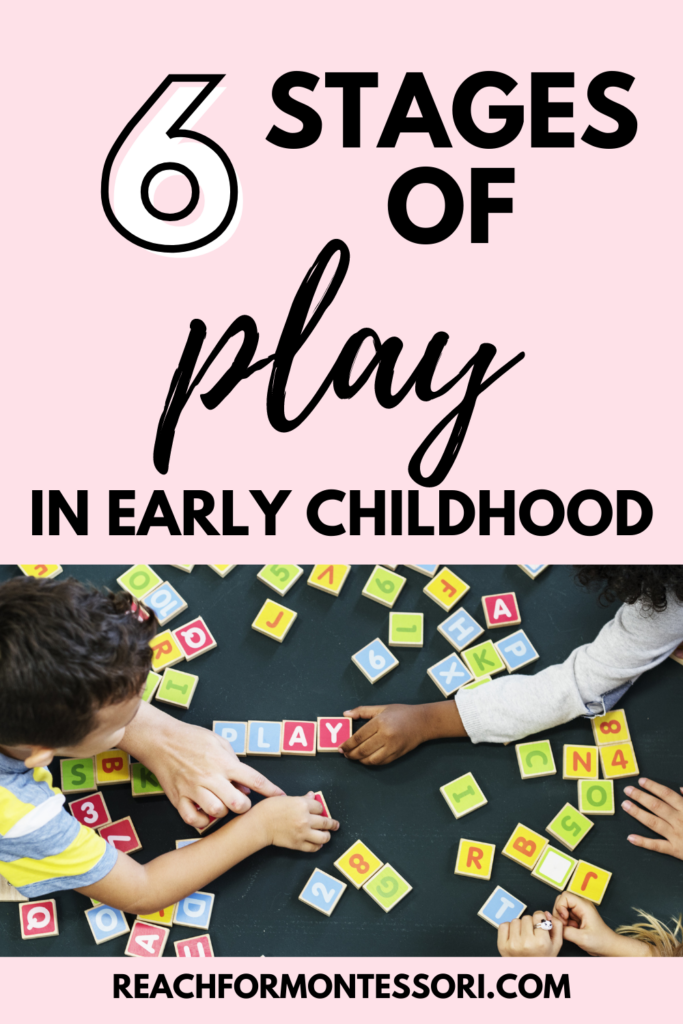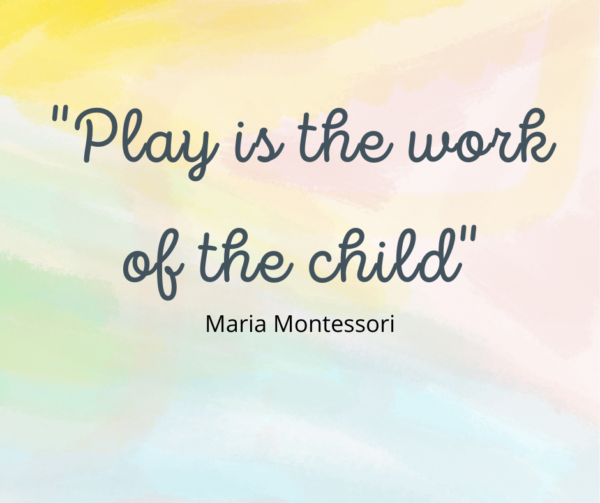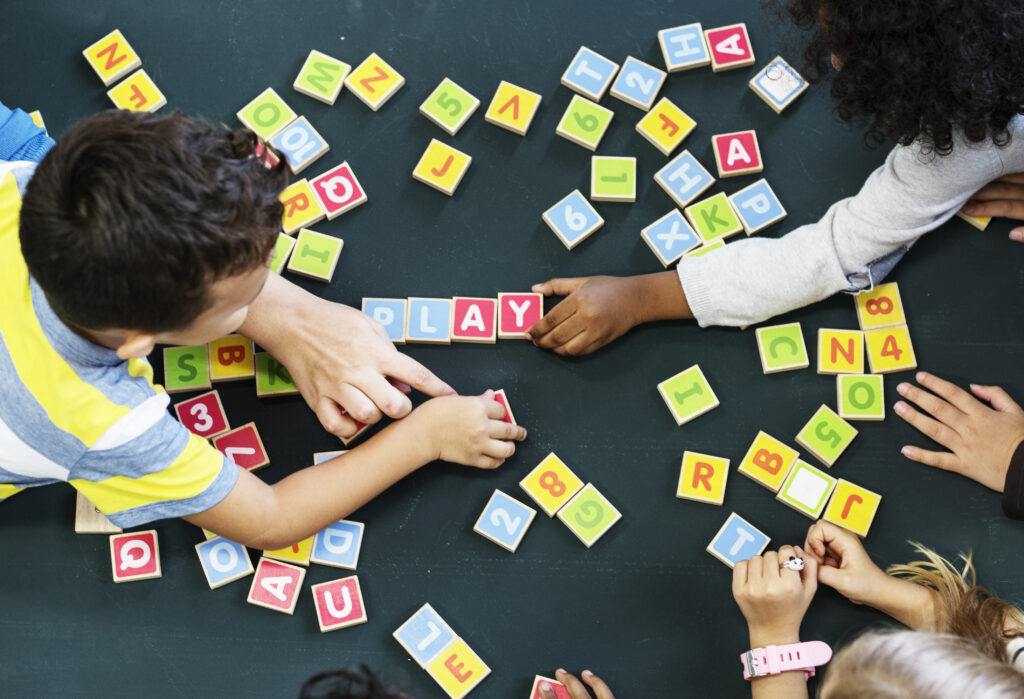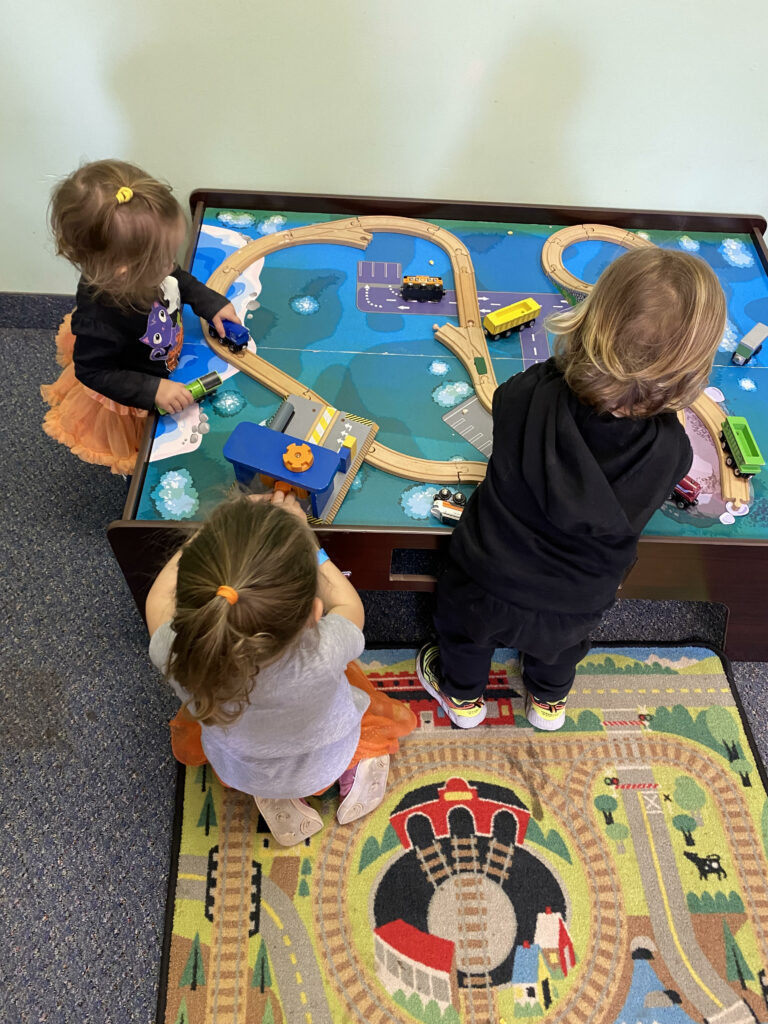Have you ever noticed that your child enjoys playing by themselves and wondered if it's normal? Or maybe you have noticed that your child enjoys watching others play, but not joining in. These are actually normal phases children go through, referred to as stages of play.
In this article, you will learn about the importance of play in early childhood, how play aligns with Montessori, and about Parten's 6 stages of play.
There was a recent somewhat controversial article from Psychology Today about the negative long-term effects caused by heavy academic-based pre-K.
You can read that article here. It basically reinforces what countless research has already determined in the past: Young children need to be allowed to PLAY.

Why Is Play Important?
I once saw a parent ask in a Facebook group what skills were needed to get her child ready for Kindergarten.
The overwhelming number of responses from early education teachers were social-emotional skills.
NOT ABCs, counting, or writing. The teachers suggested focusing on social-emotional skills such as, communication, sharing/turn-taking, and identifying emotions in others and themselves.
As parents, we can get caught up in what our child “knows” and compare them to others, forgetting that without basic social-emotional skills, we are setting them up to fail in a school setting and later in life.
Through play children develop:
- Social-Emotional skills (turn-taking, empathy/emotions)
- Language and communication
- Problem solving
- Math
- Motor skills
- Creativity/imagination
Not to mention, they will absorb material learned through play much easier than rote memorization.
Play and Montessori

There are many misconceptions regarding Maria Montessori’s stance on play. Some people think Montessori is all chores and rigidity, without any free play, but that is simply not true.
Children are allowed freedom to choose their activities, or their “work”. This can be a solitary activity, or an activity with other children.
Despite some beliefs, Montessori education does not discourage imagination. Montessori classrooms provide plenty of opportunities for open-ended play and interaction with peers.
The bottom line is; Montessori-based learning encourages development of Parten’s 6 Stages of Play.
Parten’s 6 Stages of Play
Mildred Parten Newhall was an American Sociologist and Researcher at the University of Minnesota’s Institute of Child Development.
After studying children ages 2-5 during short, one minute free play sessions, she developed the theory of Six Stages of Play and wrote about it in her 1929 dissertation.

Unoccupied Play
This stage, which starts at 0-3 months, lays the foundation for the other stages of play. Infants are observing the world around them during this stage.
Their “play” isn’t organized, but rather exploring through all their senses.
Tips to support and encourage Unoccupied Play: During the first few months, it’s important to allow infants the opportunity to explore the world.
Make sure to provide different materials, textures, and experiences. A Montessori mobile is a great toy for this stage.

Solitary/Independent Play
Between the ages of 0-2, they will start playing with toys or objects, without really paying attention to others.
Through independent play, they will start to learn basic skills, such as object permanence and the concept of gravity.
Tips to support and encourage Independent Play: Create a Yes Space where they can freely be left to play safely.
It is also helpful to determine what play schema they’re in to encourage further independent play.
Spectator/Onlooker Play
During this stage of play, children are watching other children play, but not joining in.
Parents or caretakers may feel the urge to encourage the child to join the other children in their play, but this stage is important.
They are taking in everything, just as they did as babies during unoccupied play. They are learning how other children play, recognizing social interactions, and the rules of play.
Children start to exhibit this stage of play sometime around 2 years old.
Tips to support and encourage Onlooker Play: During this stage, it's important to trust your child and not push them to play with the other child(ren).
It may seem pointless to have playdates at this time, but it is a good idea to start if you haven't already.
Parallel Play

This is when a child is playing near another child, possibly with the same toys or activity, but not interacting with each other.
They may mimic the other child, but not play “with” them. Parallel play is common around 2-3 years.
The lack of interaction may sometimes worry parents, but it’s important to know that this stage is normal and a vital transition to the next stage.
Tips to support and encourage Parallel Play: Parallel play with your child. Simply join your child in their chosen activity but do your own thing.
Things like playdough, or separate puzzles are perfect for this. Montessori is all about not interfering with a child’s concentration, and this is the perfect time to practice this while being able to observe as well.

Associative Play
Around 3-4 years old, children will start interacting with another child during play, maybe doing the same activity, but not necessarily organized and in sync.
This is where the skills they learned through onlooker and parallel play start to come into practice.
They have an interest in interacting with another child, not just the toy.
Tips to support and encourage Associative Play: Have open-ended toys that can be played with by different children at one time (pretend play, blocks, Magna-tiles).
Cooperative Play

Children start to play together with a common purpose, usually around the ages of 4-6.
They are interacting with each other and playing with the same toys or materials. Through cooperative play, they learn communication and conflict resolution.
Tips to support and encourage Cooperative Play: Participate in activities where you have to work together.
Things such as household chores, a group art activity, and family board games are perfect opportunities for cooperative play.
The American Academy of Pediatrics states that “play is essential to development.”
By encouraging these 6 stages of play, you are fostering brain development and numerous vital life skills.
If possible, try a play-based learning environment over an academic/teacher-led school.
If your child is home with you full-time, like mine, try bringing them to places that will expose them to other children (playdates, parent-and-child classes, playgrounds, etc.).
It’s important to note that the ages listed for each stage are general guidelines, and every child is different.
For further reading on the importance of play, I recommend checking out these studies and articles:
“Neuroscience, Play and Child Development,” by Joe Frost.
“We Must Demand Play-Based Education Because That's What the Evidence Tells Us,” by Teacher Tom.
“The Joyful, Illiterate Kindergartners of Finland,” by Timothy D. Walker.
“The Importance of Play in Promoting Healthy Child Development and Maintaining Strong Parent-Child Bonds,” by Kenneth R Ginsburg, MD, MSEd
